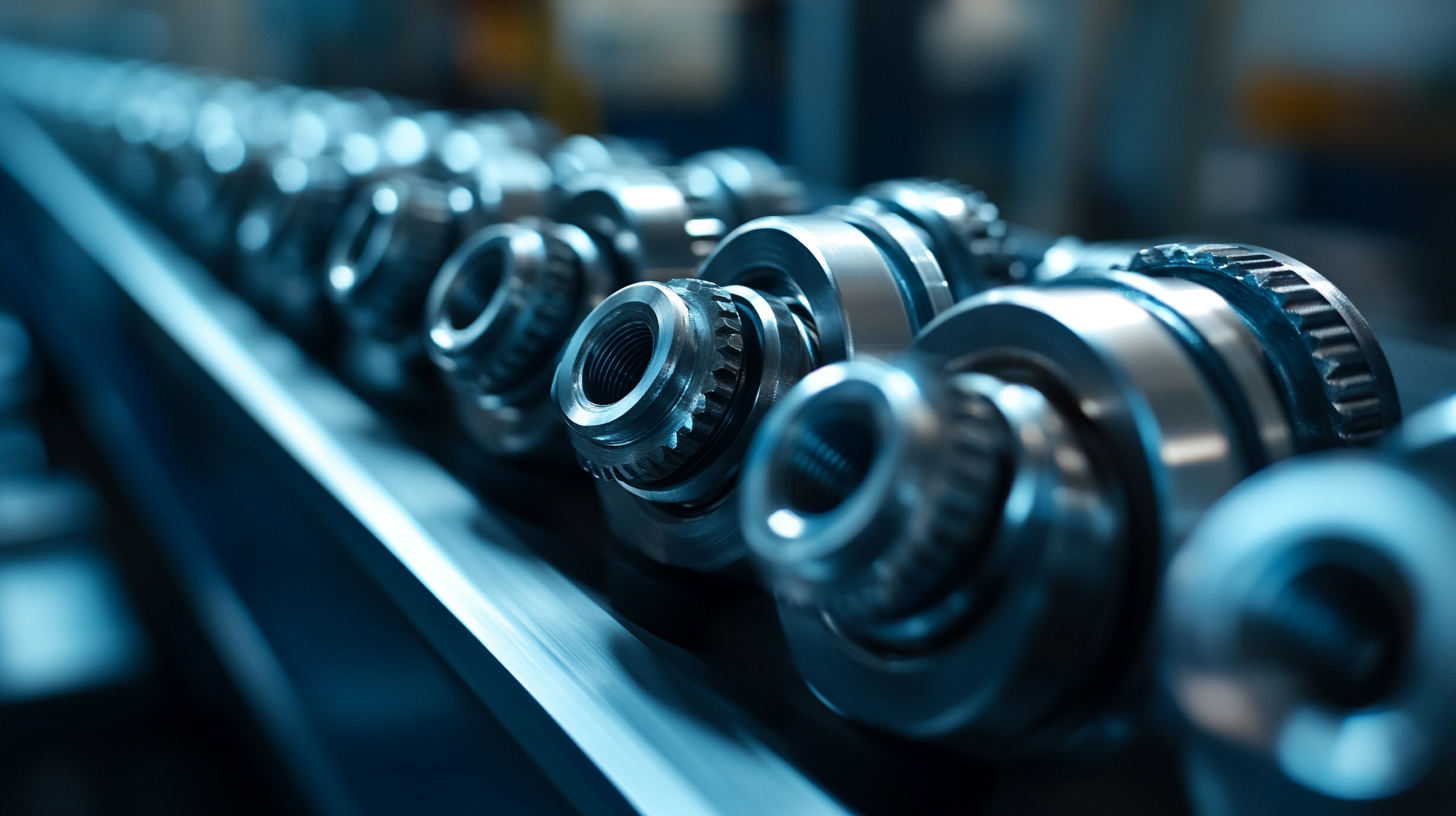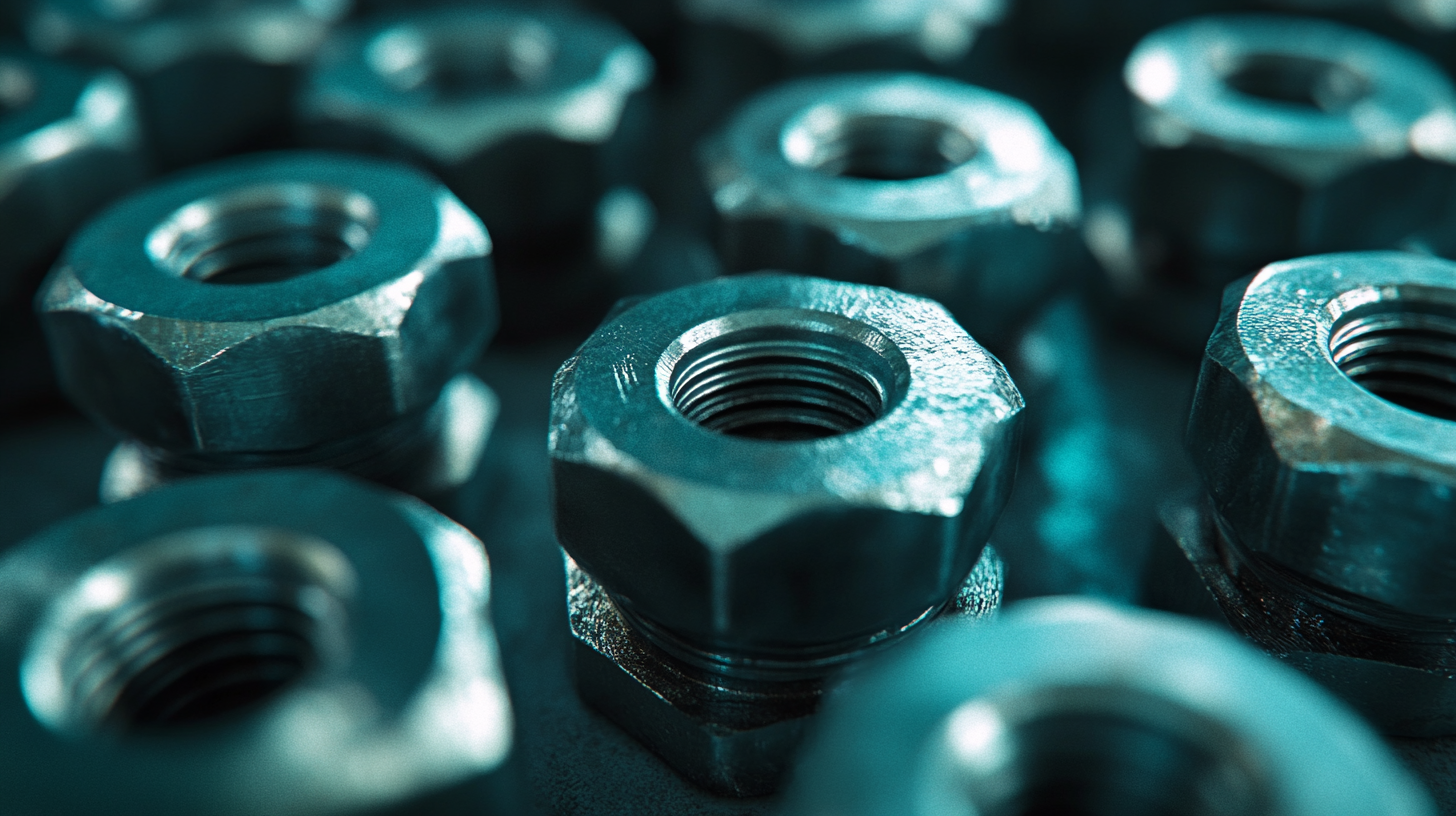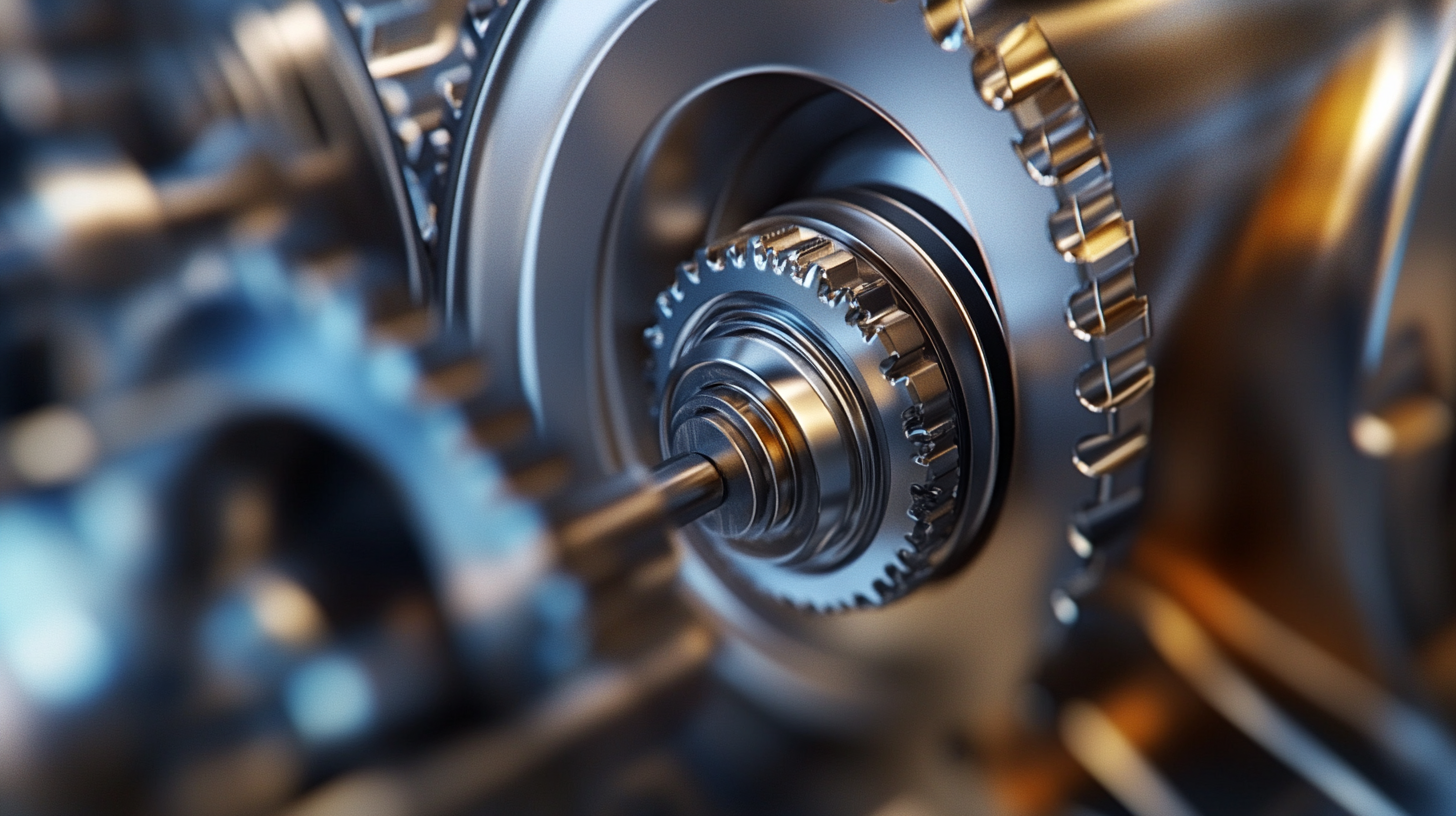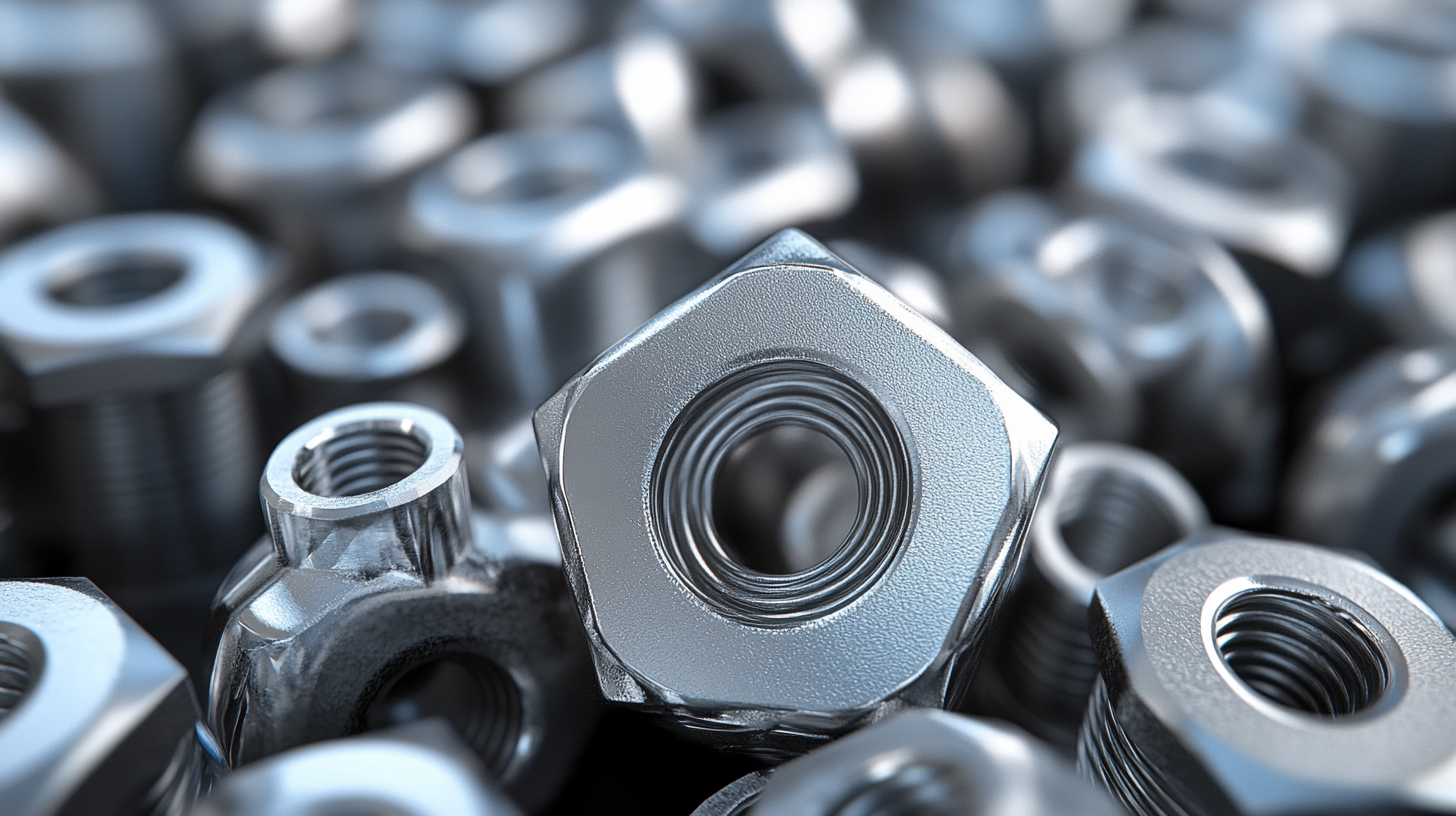In recent years, we have witnessed phenomenal changes in the manufacturing environment, the most important being cost efficiency and technological developments. As industries strive for greater productivity while eliminating costs, the market for fasteners and, namely, Prevailing Torque Nuts has grown tremendously. As per a report by MarketsandMarkets, the global fastener market is expected to reach USD 107.6 billion by 2025 at a CAGR of 4.6%. This growth speaks of an increasing demand for fastening solutions that can stand high torque and are secured in critical applications.
The development of Prevailing Torque Nuts exemplifies the ongoing trend toward better performance and sustainability in engineering solutions. With advancements in material science and manufacturing technologies, these torque nuts come in versatile configurations that are adaptable to a variety of sectors such as the automotive industry, aerospace, and construction. According to a recent report by Grand View Research, the aerospace fasteners market alone is expected to reach USD 6.16 billion by 2028, demonstrating an increasing demand for durable components that ensure safety and efficiency. Thus, the cost-effective-and-cutting-edge technology interplay is not only redefining the future of Prevailing Torque Nuts but also setting new benchmarks across the fastener industry.

Emerging technologies are hugely improving the performance of prevailing torque nuts, thereby maximizing their application in various industrial areas. Increased demand for reliable fastening solutions and efficient fastening practices has led to innovation with materials and design. According to the MarketsandMarkets report, it is expected that the fastening systems market would reach $104.6 billion by 2025, with the greatest chunk of that number attributable to regeneration of torque nut technological advancements. One of the major technological advancements being made in recent years is the development of smart materials. These materials can sustain their fastening solidness under various operational conditions by responding dynamically to changes in temperature and pressure. For example, a research paper in the Journal of Advanced Manufacturing Technology claims that using adaptive polymer composites has increased the torque retention capacity of nuts by 30%, thus giving manufacturers higher durability and performance. Furthermore, the use of sophisticated coating and surface treatment methods has proven to benefit prevailing torque nuts in corrosion and wear resistance and durability. The International Journal of Precision Engineering and Manufacturing reported that nuts coated with specialized coatings exhibit enhanced wear performance up to 50%, a factor critical to high-stress environments like the automotive and aerospace industries. With the advancement of industries comes the impact of automated and digitalized processes on the manufacturing of prevailing torque nuts. Such advancements include sophisticated manufacturing techniques such as 3D printing and AI-based production systems, which minimize costs but increase accuracy. In a survey by the Federation of European Materials Societies, companies that successfully introduced these technologies report an approximate reduction of 20% in production costs, which indicates a heavy trend toward economical yet high-performing fastening solutions.

It has been an amazing change in the production of prevailing torque nuts due to the cost reduction method adopted by manufacturing companies over the years and due to technological advancements. Newer things are creating waves in the development scene considering how economically viable they can make a contribution towards improving production efficiency in companies, such as automating production and adopting lean manufacturing.
As for some examples of such approaches, there are others which include automating processes, which can help in streamlining operations in addition to cutting labor and even material waste, consequently leading to cost-effective production.
Another strategy is to include new technologies for advanced machining systems like computerized numerical control (CNC) machines, which are designed for improving not only precision and quality but also the speed of production. Products require less cycle time while improving the repeatability, and thus organizations can improve the efficacy of operations while creating strict standards for quality. Nowadays, they are also inclined to sustainable manufacturing methods. Manufacturing without causing environmental harm with eco-friendly materials and energy-efficient methods cuts costs and raises attractiveness in a green market.
Also extremely important as an approach to reduce overhead costs is establishing partnerships with suppliers for negotiating cheap rates of raw materials. Long-term partnership agreements permit manufacturers to buy materials that they need in bulk at some concessionary terms for them, further slashing costs. These would definitely be the innovators and early adaptors of given cost reduction activities who will thrive in changing competitive settings but still be able to meet customers' shifting demands for new high-quality prevailing torque nuts.

It is clear that the present manufacturing environment for prevailing torque nuts is experiencing an important transitional event, primarily because of rapidly advancing automation technologies. A recent report of the International Federation of Robotics estimates that there has been an annual 12% increase in the use of industrial robots in manufacturing, with the outstanding growth noted in the automotive and aerospace sectors where torque nuts are critical components. Empirical evidence shows that automation not only increases production rates but improves precision as well, with less wastage and higher quality assurance for each batch produced.
Automated systems condense the sequencing of the tasks of assembly, quality inspection, and packaging into a seamless process. It cites a finding from McKinsey & Company that states that automated production lines can produce products in up to 50 percent less time. This time savings leads to handling a greater number of goods within the same time frame, which reduces production costs as result of cheaper labor and faster turnaround times. Furthermore, intelligent equipment monitoring through AI-enabled analytics helps improve output by enabling predictive analysis of maintenance needs and avoiding costly downtimes.
Automation is also synonymous with tailored solutions in the torque nut market. Such quick attempts to change production parameters exhibit the capability of automation to produce the customized torque nuts that industries may require without hindering efficiency. According to a report by MarketsandMarkets, the global market for automated production systems is expected to reach $300 billion by the year 2025, proving the importance of these technologies in keeping a competitive edge in the world's transforming industrial scenario.

Development within torque nut technology has been largely due to new and innovative materials meant to improve performance and increase the durability of systems. Conventional technologies using torque nuts are however subject to a lot of wear and tear effects resulting in degrading effects on performance after some time. The latest advent of advanced composite materials and high-strength alloys is indeed a true revelation to the industry as the properties of these materials not only resist corrosion and extreme temperatures but also reduce the overall weight of such nuts, thus more easily handling and installation for different applications.
In addition, smart technologies would make torque nuts even smarter. Such materials will contain embedded sensors that will generate real-time performance feedback of the nuts based on torque levels. Such technology convergence boosts the reliability of these nuts while at the same time saving time on preventive maintenance through reduced operational downtime. These advantages are now benefiting industries from automotive to aerospace as they optimize assembly methods and increase equipment lifetimes.
These innovative materials promise a bright future for torque nuts in course development. Manufacturing companies are now seeking and fabricating new compounds, which largely improve the performance characteristics such as higher flexibility and better pushing capacity. Thus, a new generation of torque nuts emerges to fulfill increasingly demanding applications as required in modern engineering and construction projects, all of which will translate to a whit safer and more efficient application across various sectors.
Advanced prevailing torque solutions and their demand have merged with functionalities to completely reshape the market dynamics, particularly in search of more efficient and reliable fastening systems. As technology with manufacturing operations has developed, industries are more likely to invest in prevailing torque nuts with high loads for holding power and minimum self-locking ability that allow less loosening risk under dynamic loads. Hence, industries engaged in automotive, aerospace, and heavy machinery have been touched with this revolution in integrating high-end fastening solutions in their production lines.
Emerging are different market trends that make such kind of innovations possible in prevailing torque designs. For example, manufacturers adopt assembly-consuming fastening techniques because of the growing attention to cost savings. Companies have begun realizing that even if many of the new torque nuts would need more considerable initial investments, over time, the cost associated with reduced maintenance and redoing makes such investments financially sound. High levels of strength and high input resistance for lightweight materials are also requirement-producing in construction and automotive applications.
In addition, sustainable manufacturing practices have become a new focus of attention for the present scenario for many industries, thus advocating the new materials and designs in prevailing torque solutions using sustainable practices for the environment. Manufacturers are adopting Eco-conscious approaches through recyclable materials that would also reduce the wastages of the resource during the stages of production. Thus, this creaming trend of soaking technology with sustainability is heralding the next generation of torque solutions with performance standards but gives positive attributes to the environment as well. So, the companies adopting such values will be competitive players but also pace-setters for innovations within their domains.
Innovative materials such as advanced composite materials and high-strength alloys are enhancing the durability and efficiency of torque nuts.
These materials provide greater resistance to corrosion and extreme temperatures, reduce weight, and improve overall handling and installation.
Smart technologies allow torque nuts to be embedded with sensors that monitor real-time performance and torque levels, aiding in preventive maintenance.
Industries such as automotive, aerospace, and heavy machinery are leveraging advancements in torque nuts to optimize assembly processes and extend equipment longevity.
The demand is driven by the need for efficient, reliable fastening systems that offer superior holding power and self-locking capabilities.
While initial investments may be higher, advanced torque nuts lead to long-term savings by decreasing maintenance and rework.
Lightweight materials help withstand high stress levels while contributing to overall weight reduction in construction and automotive applications.
Manufacturers are exploring recyclable materials and eco-friendly production practices, aligning with sustainability initiatives in various industries.
Ongoing research is leading to new compounds that enhance flexibility and load-bearing capabilities, aimed at meeting the demands of modern engineering.
The integration of smart technologies and high-performance materials helps prevent failures and ensures consistent performance under dynamic loads.